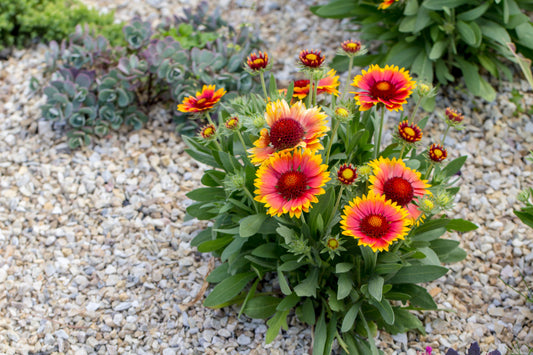Asclepia (Butterfly Weed) Planting & Growing Guide
Planting Guide Information
-
Bareroot: 1"Planting Depth
Potted: At Soil Line -
18" ApartPlanting Proximity
-
SpringPlanting Season
-
Asclepia attract butterflies and provide much needed food for their offspring.Plant Benefits
-
ModerateWater Quantity
-
Summer - FallBloom Season
-
Full to Partial SunSunlight Quantity
-
Zones 3-9Hardiness Zones
Additional Growing Information
Where to Plant
Asclepias are incredibly easy to grow when given plenty of sunlight. They'll actually thrive in various soil types, such as poor, dry, sandy, or gravelly, as long as they can soak up the rays! These plants generally fancy a neutral to slightly acidic pH, but when it comes to these beauties, there's really no need to worry.
When to Plant
For the best flowering results, plant your starter plants in the spring or fall. While they may not perform the first year, you can expect colorful blossoms from early summer through early fall in subsequent seasons.
How to Plant
- Find a spot for your Asclepias where they'll receive plenty of sunshine.
- Dig holes 12 to 18" apart and large enough to accommodate the roots without bending or breaking them.
- Work the soil around the roots as you tuck the plant down, with no more than 1” of soil covering the crown.
- Water thoroughly after planting to settle the soil around the roots.
How to Grow
- Water your Asclepias regularly during active growth to keep the soil moist, only tapering off once they become more established.
- Cut back the foliage and stalks to ground level once they start to wither and die back.
- Mulch around the plant if you're gardening in a particularly cold climate, removing when temperatures start to rise in the spring.
Asclepias Tips & Tricks
- Bear in mind that the planting hole should be roughly twice as wide as the starter plant and deep enough to accommodate the full root.
- Transplant only if absolutely necessary, as these plants prefer to be left undisturbed, and their long, strong roots make transplantation difficult. If you must dig up the plant, be sure to dig deep as some varieties of Asclepias form long taproots.
- Expect butterflies, bees, and other happy pollinators to visit the flowers in droves.
- Avoid fertilizing your Butterfly Weed, as doing so could actually harm the plants.
From the Family
-
 15% OffPreorder
15% OffPreorderAsclepias - Orange Butterfly Weed
1 bare root AsclepiaRegular price $8.46Sale price $8.46 Regular priceUnit price per$9.9515% OffPreorder -
 15% OffPreorder
15% OffPreorderAsclepias - Hello Yellow Butterfly Weed
1 bare root AsclepiaRegular price $8.46Sale price $8.46 Regular priceUnit price per$9.9515% OffPreorder -
 15% OffPreorder
15% OffPreorderAsclepias - Soulmate Swamp Milkweed
1 bare root AsclepiaRegular price $8.46Sale price $8.46 Regular priceUnit price per$9.9515% OffPreorder -
 15% OffPreorder
15% OffPreorderAsclepias - Ice Ballet Swamp Milkweed
1 bare root AsclepiaRegular price $8.46Sale price $8.46 Regular priceUnit price per$9.9515% OffPreorder -
Asclepias - Fascicularis Narrowleaf Milkweed 2 Pack
2 Plants in Quart PotsRegular price $23.77Sale price $23.77 Regular priceUnit price per$33.95Sold out








